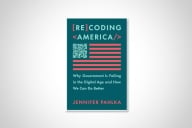You have /5 articles left.
Sign up for a free account or log in.
“For four-year colleges that aren’t elite, the message is climb or die.” —Anthony Carnevale
This week NJCU’s doctoral program in community college leadership presented an open virtual conference on issues facing community colleges, with Anthony Carnevale as the keynote speaker. I was able to watch from my office, which still feels weird.
Carnevale is a veteran of higher ed circles and a widely respected figure in the field. This talk was about the next five to 10 years for higher education in the U.S.
He made a number of claims, one of which I’ll address in a later post. But the statement above really jumped out at me.
Those of us in higher ed as a field know what “climb” means in this context. Carnevale’s argument, as I understood it, is that there’s a polarization within higher education that’s a lagging indicator of economic polarization in the larger society. Places like his own university, Georgetown, are the most wealthy and prestigious. They’re either exclusive or rejective, depending on your preference. They have tremendous endowments and a great deal of autonomy in setting their own direction. They’re seeing increased numbers of applicants even during the pandemic, accelerating a trend that has been going on for decades.
Elite institutions like that can charge more or less what they want. Even as their sticker prices have soared, their application numbers have continued to increase. They can use their endowments to offer financial aid strategically, to craft the entering classes they want. As the cumulative wealth of the top 1 percent has grown, the economic strength of the elite private institutions has grown.
Those colleges live in a different world from four-year private colleges that aren’t elite (or are inclusive, if you prefer). This second group, which is much larger than the first, bases its budgets much more on tuition than on endowment returns. Colleges in this group accept most of their applicants.
Carnevale walked us through a very brief discussion of demographics, noting that New England states in particular are facing severe drops in the number of 18-year-olds and also noting that New England states have more than the average number of colleges in them. Something has to give. His prediction, which followed cleanly from his premises, was that many colleges there won’t survive. His advice to colleges in that situation was blunt: “climb or die.”
I was struck both by the bluntness of Carnevale’s advice and by how distant it is from much of the public discussion of higher education. In political or policy circles, the discussion is around how expensive colleges have become. But that doesn’t align with what’s happening at the level of the individual institution. The least expensive colleges—community colleges—have taken the biggest enrollment hits in the last decade, and especially since the pandemic hit. The most expensive ones are thriving, setting new records for applicants. If the popular story of colleges pricing themselves out of the market was true, it would be the other way around.
To the extent that the market is bifurcating, with the middle getting hollowed out, individual private colleges have choices to make. They can try to compete with public colleges (and/or work) for students, or they can try to claw their way into the elite. The middle is becoming untenable.
There’s a playbook for moving up. NYU did it, as did GWU. It involves taking many of the popular complaints about higher ed—cost spirals, the amenities race, elitism—and doubling down on them. The places that spend like there’s no tomorrow are likelier to see tomorrow. Put differently, no college has ever cut its way to greatness.
(The dynamic reminds me of the popular complaints about “negative campaigning.” Negative campaigning drew all sorts of criticism as a genre, but it worked often enough to reward those who doubled down on it. Now that negative campaigning has been supplanted by full-blown disinformation, admittedly, the whole debate seems almost quaint.)
That puts community and state colleges in an awkward spot. These institutions have inclusiveness in their missions. They were built for the working and middle classes. Too much climbing would be a betrayal of mission. These are the places that take complaints about cost seriously but get punished for it. In states with performance-based funding, where performance is defined in terms that reflect the behaviors of well-funded students at elite places, the punishment is direct and intentional. It’s a matter of policy.
Whether we want them to or not, colleges and universities exist in a larger political economy. Over time, they can’t help but start to reflect that economy. That can be positive, as in solid employer partnerships for vocational programs. It can be devastating, as in the current contrast between chronic austerity at colleges that serve the middle class and stupendous wealth at colleges that serve the stupendously wealthy. Either way, they can’t remain exceptions for long.
“Climb or die” may be excellent advice for a president at a tuition-driven private college. That’s exactly the problem.







